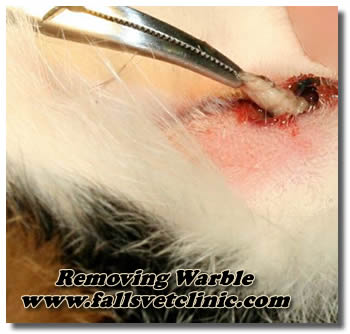Parasite in Animals
by Debbie
(Ohio)

The Warble Is A Parasite In Animals That Needs Removal
There is a parasite in animals that cattle, cats, or dogs can get. I heard it called a weable worm. We saw it in a kitten. It was under the skin in a hole and lived off the kitten and made it weak.
What is the spelling of the worm type thing? They pulled it out of kitten with tweezers, and it was some kind of worm type creature that wouldn't let the sore heal up till it was out.
I will wait to hear from you.
Thanks,
Debbie
Hi Debbie,
It took me quite a while to figure out what it was you were referring to since I hadn't really heard of a weable worm, or anything that sounded similar.
The idea of ticks and mites came to mind, but they didn't really fit the description you gave.
This site has primarily been geared toward dealing with parasites that affect human health, but one day we hope to expand to cover more info on parasites in pets.
Having said all that, after some searching, I'm pretty sure I've found the answer you are looking for. I would say the word is "warble." Does that ring a bell?
In fact, the photo I've added above is a veterinarian removing a warble from is from a cat at the Cuyahoga Falls Vet Clinic not too far from my own hometown.
It's gross, I know, but the photo is so helpful for those trying to identify a parasite in animals and get their pet proper treatment.
The best option is to have the warble removed. Some pet owners may want to do the deed themselves, but I'm not one of them. Ick! I'd prefer to let the vet do the necessary.
You'll find more info on their website about the warbles, etc., but the basics are that they are the offspring (larva) of the Cuterebra fly.
Your pet picks up this passenger along the way somewhere and it makes it's way through the body of the pet until it lodges under the skin to grow until it is ready to pop out.
Hope that helps!
Angie from allaboutparasites.com
Comments for Parasite in Animals
|
||
|
||
|
||
|
||
|
Click here to add your own comments Join in and write your own page! It's easy to do. How? Simply click here to return to Parasites. |







